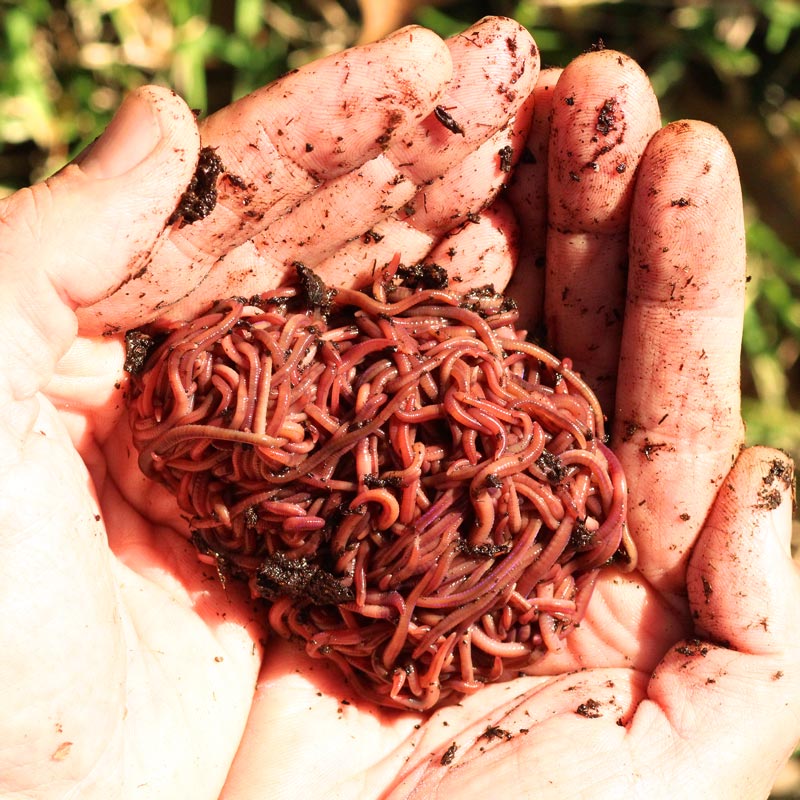Open the Keys of Red Wigglers: Your Overview to Composting Success
The integration of red wigglers into composting methods provides a considerable chance for enhancing dirt health and wellness and advertising sustainability. Comprehending their needs and behaviors is essential for enhancing their possibility, from establishing up an appropriate worm container to feeding them the appropriate materials.

What Are Red Wigglers?
(Red Wiggler Express)Red wigglers, scientifically known as Eisenia fetida, are a species of earthworm mostly made use of in composting due to their remarkable capability to decay raw material successfully. These worms are identified by their reddish-brown coloration and a segmented body, generally measuring in between 3 to 4 inches in size. Unlike various other earthworm types, red wigglers flourish in rich, natural settings, making them excellent for vermicomposting systems.
Native to North America, they are typically located in decaying fallen leaves and compost heap, where they play a critical duty in nutrient recycling. Their adaptation to residing in a moist, cardiovascular environment allows them to eat huge quantities of organic waste, breaking it down right into nutrient-rich spreadings that boost soil health and wellness.
Red wigglers replicate rapidly, with a solitary worm qualified of creating a number of cocoons each week, each consisting of multiple hatchlings. Understanding the biology and habits of red wigglers is vital for optimizing their capacity in composting applications.
Advantages of Using Red Wigglers
Harnessing the power of red wigglers in composting provides various benefits that improve dirt wellness and promote sustainable waste monitoring. These remarkable organisms effectively break down raw material, changing kitchen area scraps and lawn waste into nutrient-rich vermicompost. This ended up item is extremely advantageous for plant growth, as it enhances dirt framework, increases moisture retention, and enhances nutrition schedule.

(Red Wiggler Express)In addition, the visibility of red wigglers in your composting system can speed up the composting procedure, generating top notch compost in a portion of the moment contrasted to traditional approaches. The spreadings created by these worms are likewise teeming with valuable bacteria that official site additionally enhance the soil community.
Establishing Your Worm Container
Creating an effective worm bin is a straightforward process that can considerably boost your composting efforts. Worm bins can be made from plastic storage space bins, wood boxes, or commercially readily available worm containers.
Following, prepare the bedding product, which serves as the worms' environment. A mix of shredded paper, cardboard, and coconut coir works well, offering a comfy setting for the worms.

Feeding Your Red Wigglers
To make certain the wellness and efficiency of your red wigglers, it is necessary to supply them with a well balanced diet plan that satisfies their nutritional requirements. Red wigglers thrive on a diverse array of natural materials, which not just provide necessary nutrients however likewise promote effective composting.
Begin by integrating cooking area scraps such as veggie peels, fruit cores, and coffee grounds. Stay clear of citrus fruits, onions, and garlic, as these can be destructive to worm health and wellness. Furthermore, present shredded paper, cardboard, and dry leaves to produce a well-aerated environment.
Feeding regularity must be checked; generally, worms can eat half their body weight in food weekly. It is vital to avoid overfeeding, as excess food can cause unpleasant odors and bring in parasites. An excellent technique is to include food in tiny quantities, allowing worms to process it before introducing more.
Preserving wetness degrees is also essential; the bed linens ought to be wet however not soaked. Be certain to routinely inspect the temperature and pH degrees of the container to make sure an ideal environment for your red wigglers, inevitably boosting their composting efficiency.
Harvesting and Using Garden Compost
A successful composting process with red wigglers finishes in the rich, dark compost referred to as vermicompost, which can significantly enhance dirt health and plant growth. Harvesting this nutrient-dense product commonly takes place every 3 to six months, relying on the dimension of your system and the quantity of natural matter being processed.
To collect, carefully separate the compost from the worms and any undecomposed materials. One efficient method entails relocating the components of the container to one side and including fresh bedding and food to the empty space, motivating the worms to move. After a couple of days, the garden compost can be accumulated from the contrary side.
It is essential to use vermicompost properly to optimize its advantages. By integrating vermicompost into your horticulture routine, you not only recycle organic waste but additionally create a flourishing community that sustains lasting gardening methods.
Final Thought
In recap, red wigglers offer as outstanding allies in composting initiatives, transforming natural waste into nutrient-rich vermicompost. By comprehending the optimum conditions for their environment, feeding requirements, and garden compost harvesting techniques, garden enthusiasts can improve dirt wellness and advertise plant vitality.